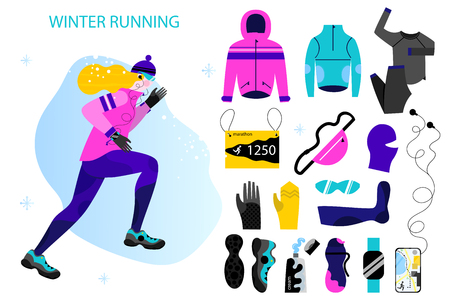Understanding Common Wildlife Encounters on American Trails
When hiking in the United States, it’s important to be aware of the wildlife you might encounter. The types of animals you’ll see often depend on the region and environment, but some creatures are common across many popular trails. Knowing what to expect can help you stay safe and avoid injury.
Most Frequently Encountered Wildlife
| Animal | Where You Might Encounter Them | Seasons Most Active |
|---|---|---|
| Bears (Black & Grizzly) | Forests, mountains, especially in the West, Rockies, and Alaska | Spring through fall |
| Mountain Lions (Cougars) | Western states, mountainous or rocky areas, sometimes foothills | Year-round, but more active at dawn and dusk |
| Snakes (including Rattlesnakes) | Deserts, grasslands, forests—especially in the South and West | Spring through early fall; warm days |
| Ticks | Tall grasses, wooded areas—Northeast, Midwest, and South especially | Late spring through fall |
Bears: What to Know
Bears are most often found in forested or mountainous regions. Black bears are more widespread, while grizzly bears are typically seen in parts of the Northern Rockies and Alaska. Bears usually avoid humans but may approach campsites if they smell food.
Mountain Lions: Staying Aware
Mountain lions live mostly in the western United States. They are elusive and rarely seen, but they do inhabit remote trails near rocky outcroppings or dense brush. They’re most active at dawn and dusk.
Snakes: Watch Your Step
The U.S. is home to several venomous snakes like rattlesnakes, copperheads, and cottonmouths. These snakes tend to sun themselves on rocks or trails during warm weather. Always watch where you step or place your hands when hiking in their territory.
Ticks: Tiny But Risky
Ticks are a common concern in grassy or wooded areas, especially during warmer months. They can carry diseases like Lyme disease, so it’s important to check yourself for ticks after spending time outdoors.
Quick Reference Guide: Where You’re Likely to Encounter Wildlife
| Environment Type | Possible Wildlife Encounters |
|---|---|
| Dense Forests & Mountains | Bears, mountain lions, ticks |
| Open Grasslands & Meadows | Snakes, ticks |
| Rocky Outcrops & Canyons | Mountain lions, snakes |
| Lakes & Streams with Tall Grass Nearby | Bears (if food is present), ticks, snakes (near water) |
Tip:
If you hike in these environments frequently, consider carrying a wildlife guidebook for your area or downloading a reputable app to help identify local species and learn about their habits.
2. Identifying Signs of Wildlife Presence
When hiking in the U.S., being aware of your surroundings is a key part of staying safe and avoiding wildlife-related injuries. Recognizing signs that animals are nearby can help you make smart choices about where to walk, when to be extra cautious, and when it’s best to turn around. Here’s how you can spot evidence of wildlife activity on your hike.
Animal Tracks: Nature’s Footprints
Animal tracks are one of the most common clues that wildlife is nearby. Different animals leave different prints, and learning to recognize a few basics can go a long way in increasing your situational awareness. For example, deer tracks look like two teardrop shapes, while bear prints show five toes and a large heel pad. Here’s a quick reference table for some common U.S. wildlife:
| Animal | Track Shape | Common Locations |
|---|---|---|
| Deer | Two pointed, teardrop shapes | Forests, open fields |
| Black Bear | Paw print with five toes and wide heel | Wooded areas, mountains |
| Coyote | Oval paw print with visible claws | Pine forests, deserts |
| Raccoon | Small hand-like print with five fingers | Near water, wooded trails |
Scat: Animal Droppings Tell a Story
Scat (animal droppings) may not be pleasant to encounter, but it’s an important sign of animal presence. The size, shape, and contents of scat can tell you what kind of animal has been in the area and sometimes even what it has been eating. For instance, black bear scat is often large and filled with berry seeds in summer or fall, while deer scat appears as small pellets grouped together. If you see fresh scat on the trail, consider moving cautiously or choosing another route.
Other Evidence: Fur, Feathers, Scratches & More
Apart from tracks and scat, keep an eye out for other signs such as:
- Fur or feathers: Clumps caught on branches or thorns can indicate recent animal activity.
- Scent markings: Some animals mark territory with strong-smelling urine or musk; if you notice a musky odor or wet patches on rocks or trees, take note.
- Tree scratches or claw marks: Bears and mountain lions sometimes scratch tree bark to mark territory.
- Nests or dens: Look for holes in the ground, piles of sticks, or burrows that could shelter animals like foxes or snakes.
Tips for Staying Alert on the Trail
- Pace yourself so you have time to look around while walking.
- If you spot fresh signs of large predators (like bears or mountain lions), make noise as you hike to avoid surprising them.
- Avoid picking up fur or touching scat—some diseases can spread through contact.
- If you’re hiking with kids or pets, keep them close when animal signs are present.
Your Best Tool: Situational Awareness
The more practice you get spotting these signs, the more confident you’ll feel navigating any trail. Remember that being aware doesn’t mean being afraid—it just means you’re respecting nature and giving both yourself and wildlife plenty of space.
![]()
3. Practicing Safe Behavior to Minimize Encounters
Best Practices for Avoiding Wildlife While Hiking
When exploring America’s trails, knowing how to behave can make all the difference in keeping wildlife encounters safe and rare. Here are some practical tips every hiker should follow:
Food Storage Tips
| Tip | Description |
|---|---|
| Use Bear-Resistant Containers | Store all food and scented items in bear canisters or approved bear bags, especially in areas known for bears. |
| Hang Food Properly | If no bear box is available, hang your food at least 10 feet off the ground and 4 feet away from tree trunks. |
| Pack Out Trash | Never leave food scraps or wrappers behind; carry out everything you bring in. |
| Avoid Scented Products | Minimize use of scented lotions, deodorants, and other toiletries that could attract animals. |
Making Noise on the Trail
Most wild animals prefer to avoid humans. Making noise lets them know you’re coming and gives them a chance to move away. Try these methods:
- Talk with your hiking partners as you walk.
- Clap your hands or sing occasionally, especially around blind corners or dense brush.
- Wear a small bell on your backpack if hiking alone in bear country.
Group Hiking Tips
- Stay Together: Hike in groups whenever possible. Wildlife is less likely to approach larger groups.
- Keep Kids Close: Make sure children stay within sight and don’t wander ahead.
- No Pets Off Leash: Always keep pets leashed. Unleashed pets can provoke wildlife or lead dangerous animals back to you.
Understanding Animal Behavior
The more you know about local wildlife, the better prepared you’ll be. Here’s a quick reference for common American trail animals:
| Animal | Main Risks | How to Avoid Problems |
|---|---|---|
| Bears | Food-seeking, defensive mothers with cubs | Avoid surprising them by making noise; never get between a mother and cubs; store food properly. |
| Mountain Lions (Cougars) | Territorial, may stalk lone hikers or runners | Avoid hiking alone at dawn/dusk; make yourself look big if encountered; never run away. |
| Snakes (Rattlesnakes) | Bites when stepped on or surprised | Watch where you step and sit; avoid tall grass; wear boots and long pants in snake country. |
| Bison & Moose | Aggressive when approached too closely, especially during mating season or with calves | Keep a safe distance (at least 25 yards from bison/moose); never try to feed or pet wild animals. |
Quick Tips Recap:
- Store food securely and pack out all trash.
- Make your presence known with noise.
- Hike in groups and keep pets leashed.
- Learn about local wildlife before you hit the trail.
This proactive approach will help keep both hikers and wildlife safe while enjoying America’s great outdoors.
4. Responding to Wildlife Encounters Appropriately
Step-by-Step Guidance for Different Animal Encounters
When hiking in the United States, you might come across a variety of wild animals. Knowing how to react in these situations can help you avoid injuries and keep both you and the animals safe. Here’s a practical guide on what to do if you encounter some of the most common and potentially dangerous wildlife.
Bears
| Situation | Recommended Action |
|---|---|
| You spot a bear far away | Stay calm, keep your distance, and do not approach. Make noise to let the bear know you’re there, then slowly back away. |
| You surprise a bear at close range | Do not run. Stand your ground, speak calmly, and slowly wave your arms. If it doesn’t leave, back away slowly—never turn your back. |
| The bear approaches or charges | If it’s a black bear, try to make yourself look bigger and make loud noises. If it’s a grizzly, play dead by lying flat on your stomach with hands behind your neck. Use bear spray if available. |
Mountain Lions (Cougars)
| Situation | Recommended Action |
|---|---|
| You see a mountain lion nearby | Pick up children and keep them close. Do not crouch down or run. Maintain eye contact and try to appear larger by raising your arms or opening your jacket. |
| The mountain lion acts aggressively or approaches | Shout firmly, throw sticks or rocks if needed, but do not turn your back or run. Back away slowly while facing the animal. |
| An attack occurs | Fight back with anything you have—sticks, rocks, or even your fists—aiming for the eyes and face. |
Snakes (Including Rattlesnakes)
| Situation | Recommended Action |
|---|---|
| You see a snake on the trail | Stop where you are and give it plenty of space. Wait for it to move away or walk around it at least six feet from its head. |
| You’re bitten by a snake | Stay calm, move away from the snake, and keep the bite area still and below heart level if possible. Call 911 immediately and seek medical attention. Do not try to suck out venom or use a tourniquet. |
Aggressive Smaller Mammals (Raccoons, Skunks, Foxes)
| Situation | Recommended Action |
|---|---|
| An animal is acting strangely or approaching humans without fear (potential rabies risk) | Do not approach or attempt to feed the animal. Back away slowly and report the sighting to park staff or local authorities as soon as possible. |
| An animal tries to bite or scratch you | If bitten or scratched, wash the wound with soap and water right away and seek medical attention immediately. Rabies shots may be necessary. |
5. First Aid and Emergency Actions for Wildlife-Related Injuries
Immediate Steps to Take After a Wildlife Encounter
When hiking in the U.S., coming across wildlife like snakes, spiders, bees, or even large mammals is possible. If you or someone in your group is injured by an animal, quick and calm action can make a big difference. Here’s what to do right away:
- Stay Calm: Try not to panic. Move yourself or the injured person to a safe area away from the animal.
- Check for Immediate Danger: Make sure the threat (animal or insect) is no longer present before providing first aid.
- Assess the Injury: Determine what kind of injury it is—bite, sting, scratch, or allergic reaction.
First Aid for Common Wildlife-Related Injuries
| Type of Injury | Immediate Action | When to Seek Medical Help |
|---|---|---|
| Bites (snake, mammal) | Keep the injured limb still and below heart level; clean wound with water; do not suck out venom or apply ice. | If bitten by a venomous snake or wild mammal (raccoon, fox), seek help immediately. Call 911 if unsure. |
| Bee/Wasp Stings | Remove stinger gently with a credit card edge; wash area; apply cold pack to reduce swelling. | If there is trouble breathing, swelling of face/throat, or signs of shock (allergic reaction), use an EpiPen if available and call 911. |
| Spider Bites | Wash bite with soap and water; apply ice pack; keep area elevated if possible. | If bitten by a black widow or brown recluse (rare but possible), get medical help quickly. |
| Ticks | Remove tick with tweezers, grasping close to skin; clean area thoroughly. | If fever, rash, or flu-like symptoms appear within weeks, see a doctor for Lyme disease testing. |
| Scratches/Scrapes | Clean wound well; cover with sterile bandage. | If animal was wild or acting strangely (possible rabies risk), seek medical advice promptly. |
Allergic Reactions: Know the Signs and What To Do
Anaphylaxis is a severe allergic reaction that can happen quickly after stings or bites. Watch for symptoms like hives, swelling of lips/tongue/throat, trouble breathing, dizziness, or fainting. If these occur:
- Use an EpiPen: If available and the person knows they are allergic.
- Call 911 Immediately: Even if symptoms improve after using an EpiPen—further treatment may be needed.
- Lying Down: Have the person lie down with feet slightly elevated unless this causes discomfort or trouble breathing.
If You’re Hiking Remotely: Additional Tips
- Cary a Basic First Aid Kit: Include antihistamines, sterile dressings, tweezers, and an emergency blanket.
- Keeps Phones Charged: Coverage may be limited on trails—consider carrying a whistle or personal locator beacon for remote hikes.
- Tell Someone Your Plans: Always let someone know your route and expected return time before heading out on any hike in the U.S.
If you’re ever unsure about the seriousness of a wildlife-related injury while hiking—especially involving venomous animals or potential allergies—it’s safest to get checked by medical professionals as soon as possible. Always err on the side of caution when dealing with wildlife injuries outdoors!


